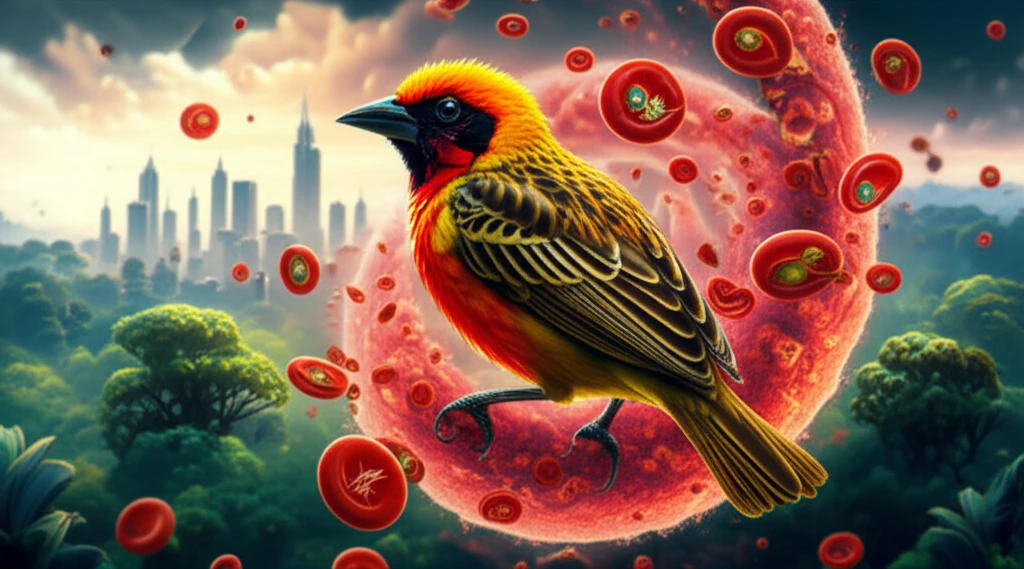
Bird Blood Parasites: The Silent Threat in Urban Birds
"New study reveals a surprisingly high prevalence of blood parasites in village weavers, raising concerns about urban bird health and potential risks to other animals and humans."
Birds, often admired for their beauty and song, play a crucial role in our ecosystems. But like all living creatures, they are susceptible to parasites. Among these, blood parasites, or hemoparasites, are a particularly concerning group. These tiny organisms can infect birds, potentially impacting their health and even affecting the delicate balance of local ecosystems.
A recent study conducted in Dschang, a city in western Cameroon, has shed light on the prevalence of these hemoparasites in village weavers (Ploceus cucullatus), a common urban bird species. The findings reveal a surprisingly high infection rate, raising questions about the health of urban bird populations and the potential risks these parasites may pose.
This article explores the key findings of this study, diving into the types of parasites discovered, the potential factors influencing their spread, and the broader implications for bird conservation and public health. Understanding these tiny threats is crucial for protecting both avian life and our own well-being.
What are Hemoparasites and Why Should We Care?

Hemoparasites are parasites that live in the blood of their hosts. In birds, these parasites can include protozoa like Plasmodium (the same group that causes malaria in humans), Haemoproteus, Leucocytozoon, and Trypanosoma. These parasites are typically transmitted by biting insects like mosquitoes, midges, and blackflies.
- Anemia (reduced red blood cell count)
- Weakness and lethargy
- Weight loss
- Reduced reproductive success
- Increased susceptibility to other diseases
Protecting Our Feathered Friends: What Can Be Done?
The study in Dschang underscores the importance of monitoring hemoparasite prevalence in urban bird populations. Further research is needed to fully understand the factors driving infection rates and the potential consequences for bird health and ecosystem stability. By understanding these threats, we can take proactive steps to protect our feathered friends and ensure the health of our shared environment.
